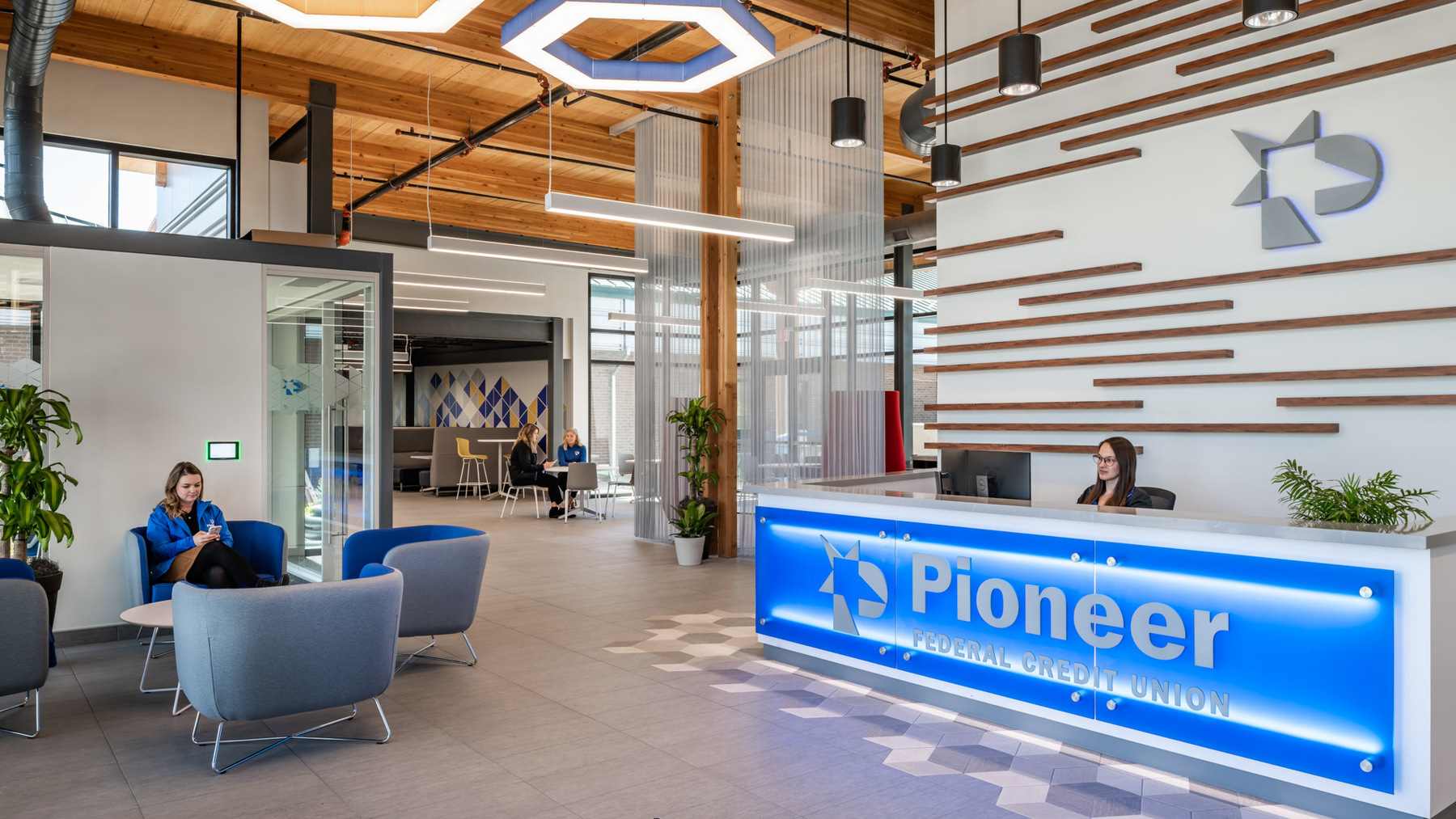We all know that feeling you get in a drab building, be it a bank branch or a corporate office. A building that feels uninspiring and demotivating. And these buildings are all too common, with our original research including over 1,200 credit union employees revealing that over 65% of credit union employees are unsatisfied with the general décor of their workplace!
Addressing the aesthetics of your facilities can have a real impact on how welcoming your spaces are, improve the mental health of those who use the spaces, boost employee productivity, and have a surprising impact on your bottom line.
Keep reading to learn more!
1. Aesthetically Pleasing Spaces Feel More Welcoming
Visual appeal has a psychological impact on how we feel about a space, and more importantly how welcome we feel being in that space. The design of a space sends a clear message to occupants.
A University of Washington Health psychologist, Shilagh Mirgain PhD, uses restaurants as an example. Think about the aesthetics of restaurants you visit and the mood they set, and how much time you spend in them. Some encourage you to settle in and linger over conversations and drinks long after the meal has finished, fast food or popular lunch spots encourage you to finish your food and get moving so the next customer can sit down.
The same idea applies to your branches and workplaces.
An old-fashioned branch with a traditional queue and drab colors and materials signals that this is a transactional space. Members or customers walk in and they are drawn to a transaction zone, where they can cash a check or withdraw money.
Compare this to a branch like Verity’s, which feel more like a café or art gallery. Warm, on-brand colors and local artwork give their branches the feeling of a space where members are welcome to spend time. When those members walk in the focus isn’t on doing a transaction and getting out, but rather on having a conversation. This both deepens the relationship between Verity and their members, it also creates opportunities for staff to cross sell and find out what products match the members’ financial needs.
And as we emerge from the COVID-19 pandemic, where many workers have enjoyed the benefits of remote working, a nice-looking office can make returning to the office more attractive.
2. They Improve Mental Health and Wellbeing
Aesthetically pleasing spaces, especially those that feature art and natural themes, remove stress and improve mental health. There is an extensive body of research clearly linking our surroundings to wellbeing.
We frequently use natural elements in interior designs, from artwork and materials that embrace the natural beauty of the surrounding areas to moss walls and living plants. This evokes a sense of biophilia, our desire to connect with nature. Research published by the National Institutes of Health found through a review of fifty studies that environments devoid of nature have a negative effect on our mental health, and that evoking natural elements in man-made environments can cancel this out.
We spend a quarter of our lives at work, and this gives our workplaces a major impact on our mental health and wellbeing for better or worse. By creating aesthetically pleasing environments, we can dramatically improve the impact that work has on our lives.
3. They Boost Productivity
Employees in aesthetically pleasing spaces are more productive. Stress and poor mental and physical wellbeing have a dramatically negative impact on productivity, and by creating branches and workplaces where these negative impacts are removed can significantly boost productivity.
This makes aesthetics not only good for workers, but good for the bottom line as well.
4. They Have a High Return on Investment
It might be tempting to think of design upgrades as a cost center, but there’s a strong argument that they generate a significant return on investment.
If you break down the lifecycle cost of analysis, the design and construction only accounts for 2%! Maintenance comes in at 6%.
And your people? They’re by far your biggest investment at a whopping 92%!
This means that investments in facilities that have a positive impact on the health, wellbeing, and productivity have a major impact on the efficiency and bottom line of your organization, yet a minimal impact on the lifecycle cost of your building.
Investing in your people isn’t just a good thing to do, it benefits your bottom line.
Learn More
Want to learn the "why" behind current trends in branch design? Fill out the form below to download out 2023 Branch Ideabook - The Human Era of Banking. In it we break down what the branch of the future means with dozens of visual examples, and we share several articles explaining actionable strategies that you can employ to help your institution stand out in the face of an increasingly commodified industry.
Download our 2023 Branch Ideabook - The Human Era of Banking!

